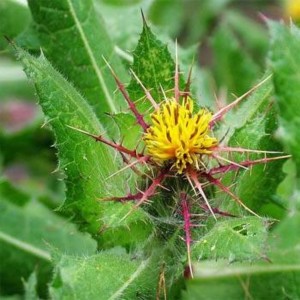Dear Annie, I loved your post about gallbladder pain! I have a friend who recently had their gallbladder removed. What can they expect? Are there any issues for which they should be on the lookout? Do you know of any herbal or dietary protocols that could help?
Thank you for asking. Gallbladder removal (called Cholecystectomy) is a common procedure, one often recommended for gallstones and gallbladder problems in general. In fact, surgery is often the first thing most medical professionals suggest. Although surgery does remove the serious pain of gallbladder attacks, removing the gallbladder comes with its own challenges. The gallbladder is also removed in cases of large cysts or tumors.
The following article contains affiliate links. That means, if you purchase a product through one of the links, I make a commission at no additional cost to you. I appreciate it each time you click on or make a purchase from one of my links. Thank you for your support.
The Gallbladder
The gallbladder is an important part of the human digestion system. Its function is to store and concentrate bile produced by the liver. When we eat fats and oils, the gallbladder releases concentrated bile into the duodenum (a part of the small intestine). This concentrated bile (also called bile salts), helps break down fats and oils for digestion. For more information about the anatomy and function of the gallbladder please see the Ask Annie post – Natural Solutions for Gallbladder Pain.
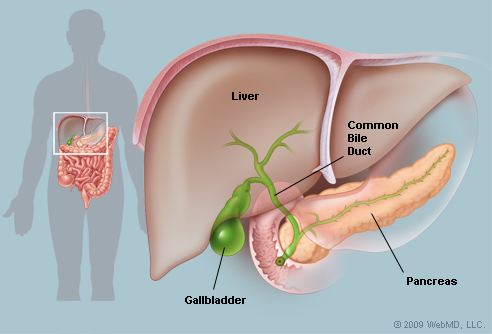
A few things happen when the gallbladder is removed.
- Thinner bile is constantly released into the small intestine, rather than concentrated bile being released only as needed.
- Fats, oils, and fatty vitamins are not fully digested.
- Some folks (up to 40%) develop Post-Cholecystectomy Syndrome or PCS, a condition with many of the same symptoms of a blocked bile duct or gallstones.
- Sometimes, as a result of surgery, scar tissue forms in the main bile duct between the liver and the small intestine. Scar tissue can cause a disruption in bile flow resulting in pain and inflammation. In extreme cases, stones can form in the bile duct around the scar.
Bile flow with after-gallbladder removal
When we have no gallbladder, the flow of bile to the small intestine is continuous. This constant drainage can damage the walls of the small intestine causing irritation, inflammation, pain, and diarrhea. Because bile is not controlled, there may be periods of too much bile, (in between meals) and not enough bile (during mealtime.)
Dysregulation of the biliary system can have long term and short-term consequences. For example, long term, we may have more difficulty with digestion including acid reflux, blood sugar dysregulation, congestion in the abdominal area, headaches, and PCS. Not enough bile during meals can cause constipation and difficulty digesting fats. Some people have oscillating problems with both constipation and diarrhea.
What happens when fats and oils are not digested properly?
Think of concentrated bile (also called bile salts) like dish soap. If a few drops of oil are placed in a cup of water, the drops bind together making a sort of bubble. When rinsed with water, a film is likely left behind. But, if you add a drop of dish soap to the water and oil, the oil breaks up in smaller particles that are easily rinsed away. Concentrated bile delivers this action to dietary fats. It breaks apart fats and oils into fatty acids for easy assimilation.
When fats are not broken down, two things can happen. First the body tries to digest the entire fat globule, resulting in a build-up of fats in our intestines, blood stream, and body tissues. Second, undigested fats and oils pass quickly through the small and large intestines causing diarrhea, sometimes within minutes of eating.
Post-Cholecystectomy Syndrome (PCS)
Gallbladder pain can be very intense. Some say it is worse than the pain of childbirth. Because of the pain involved, many people feel a sense of relief shortly after their cholecystectomy. Some (about 60%) never have any problems. They seem to be able to digest fine, and some don’t even have to watch their fat intake.
Somewhere between 5-40% of those who have their gallbladder removed develop what is called Post-Cholecystectomy Syndrome or PCS. It happens differently for everyone and seems to develop over a period of several years. At first everything is fine. The person goes back to their normal diet, maybe with a few modifications. Then after a few to several years’ symptoms develop very much like the ones they had that caused the gallbladder removal, although they are not usually as strong or violent.
Symptoms of PCS
- Pain in the upper and/or lower abdomen, especially the upper right quadrant
- flatulence
- intestinal gurgles
- diarrhea
- gastritis
- esophagitis
- nausea
- abdominal bloating
- vomiting
- fever
- jaundice
Energetically, PCS is a combination of abdominal stagnation and excess heat. Bile is a hot caustic liquid. When caustic heat is constantly dripping on the same spot for many years, coupled with a build-up of fats, an imbalance develops not only in the liver and small intestine, but also in the pancreas, stomach and likely the kidneys.
Our bodies are fine-tuned biological machines. When one thing is out of balance, the whole organism feels it. At first the body compensates. But after several years, strain can cause an overload. Usually, in relation to gallbladder removal and the biliary system in general, the overload or imbalance is felt in the digestive system and connected abdominal organs.
Preventing PCS
The best way to prevent PCS is to stick with dietary recommendations related to post-gallbladder removal. If you have PCS, the following guidelines will also likely decrease symptoms and improve digestion. However, it is a good idea to consult with a qualified natural health practitioner or clinical herbalist for personalized recommendations.
Dietary and lifestyle suggestions for life after gallbladder removal:
1. Eat small frequent meals.
By eating small meals more often, there will be something in the small intestine more often to absorb excess bile. Consider high fiber foods for this purpose such as oats, nuts, flax seeds, chia seeds, rice and legumes.
Avoid large meals, especially after longer periods of fasting, like eating a large dinner after not eating all day or a large breakfast after not eating all night. If you want to eat a larger meal, prepare your body by taking either bile salts or digestive enzymes 15 to 20 minutes before your meal. (I like digestive enzymes for this purpose).
2. Stick to healthy fats.
Our body needs fats to be healthy. Medium chain triglycerides (MCT) digest mainly in the stomach and do not require pancreatic enzymes or bile salts for digestion. They are also more readily available for energy but do not build up fat in bodily tissue. MCTs Include healthy fats like Omega 3 fatty acids, fish oil, coconut oil, butter, whole milk products ( like yogurt), palm kernel oil, avocados, and avocado oil.
3. Keep it low fat.
Except for the healthy fats listed above, avoid foods that contain a high amount of fats and oils. Foods such as pork, bacon, sausage, lunchmeat, red meat, potato chips, pizza, most prepared crackers, ice cream, pies, pastries, doughnuts, cake, cookies, etc. should be avoided or enjoyed sparingly.
Foods to enjoy
There is no need to focus on what should be avoided. The list of healthy, easy to digest foods is a long one. As a rule of thumb, cooked or steamed foods bind more easily with excess bile and so are preferred to raw foods.
In general, leafy greens are good for the liver. Milk contributes to dampness and stagnation but may be ok in small amounts. Sugar and alcohol are best avoided. Sugar in excess converts to fat in the liver. The liver then sends them back into the small intestine for digestion where it can cause pain, gas, bloating and diarrhea.
Here is a list of foods for you to enjoy with no gallbladder. (Taken from Very Well Health)
- Fruit including apples, applesauce, bananas, pears, plumbs, grapefruit, oranges, lemon, lime, and prunes
- Berries of all kinds
- Avocados
- Beans, legumes, and lentils, chickpeas
- Broccoli, brussels sprouts, cabbage, kale, chard, collards, mustard greens etc.
- Most vegetables like carrots, potatoes, peas, green beans, bell peppers, etc.
- Dairy-free milks (soy, rice, almond, oat)
- Eggs, egg whites, and egg substitutes
- Fish (salmon, cod, halibut)
- Yogurt
- Nuts and nut butters
- Oats and barley
- Olive oil (extra virgin)
- Rice
- Chia seeds and flax seeds
- Sweet potatoes
- Tofu and tempeh
- White meat, chicken and turkey
- Lean protein, including good-quality, pasture-raised, wild-caught, or grass-fed sources
Healthy Movement
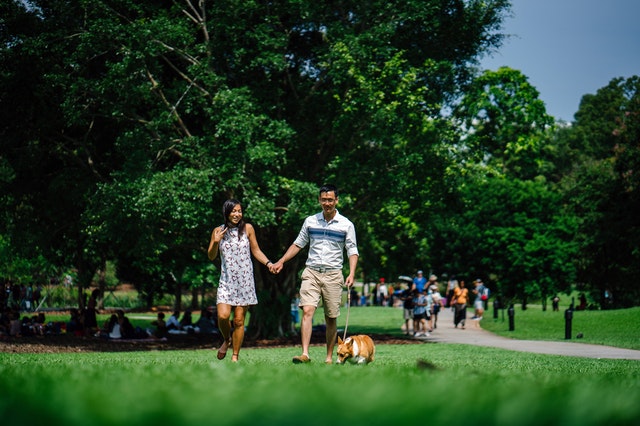
The lymph system operates like the garbage system of human body. It is made up of a large network of vessels, tissues, and organs that runs parallel to the cardiovascular system. One of its jobs is to filter out harmful and unnecessary elements. Unlike the cardiovascular system, lymph does not have a pump. Rather, its flow relies on the movement of muscles. Through gentle movement, lymph flows more smoothly. When lymph flows smoothly, there is less likelihood of stagnation or a buildup on nonmoving fluids or toxins.
Activities that keep the lymph moving and the body happy might include walking, dancing, tai chi, yoga, hiking, swimming etc.
Herbal Solutions for maintaining digestive health and treating PCS
Herbs are best used in a supportive role, with diet and lifestyle being the first and most important elements to maintain good health and digestion. When working with herbs, we want to choose those that support the liver, promote digestion, prevent gas, and protect and heal the mucus membrane of the small and large intestine. We may want to look at astringents to protect and heal internal tissues and that address diarrhea, (should that be a concern). If constipation is a concern, digestive herbs and laxatives may be added.
Energetics is another consideration. Look for herbs that are cooling, slightly drying, and mildly stimulating. Bile is a hot, caustic substance. Therefore, heating herbs may make pain and inflammation worse.
Herbs for maintaining digestive health following gallbladder removal.
Liver Support | Lymph Mover | Digestive Tonic | Mucosal Vulnerary | Astringent |
Dandelion Root | Dandelion Root | Dandelion Root and Leaf | Plantain | Plantain |
Plantain | Plantain | Fennel seeds | Barberry Root | Blessed Thistle |
Fennel Seeds | Burdock Root | Blessed Thistle | Marshmallow Root | Catnip |
Blessed Thistle | Barberry Root | Burdock Root | Chamomile | Rose |
Burdock Root |
| Barberry Root |
| Nettles |
Barberry Root |
| Chamomile |
|
|
Dandelion (Taraxacum officinale)
Dandelion is a nice herb for our purpose. With a special affinity to the liver, Dandelion root works to decongest and support liver function, keep the lymph system flowing and acts as a gentle digestive. Dandelion drains fluid congestion and irritation, dissolves and prevents the formation of stones, helps stabilize blood sugar and supports metabolic stabilization.
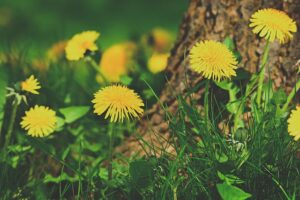
Plantain (Plantago major)
Plantain is another great fit for our purpose. Plantain protects the liver and helps lymph move, preventing and clearing toxic heat. As a mild digestive, this humble little plant helps relieve inflammation along the digestive tube from the stomach to the intestines, thus, making it valuable when addressing symptoms such as acid indigestion, diarrhea, hemorrhoids, and stomachache. It also protects and heals mucosal tissue and prevents infection.
Plantain is best used as a cold infusion when addressing upper digestive issues like acid indigestion and stomachache.
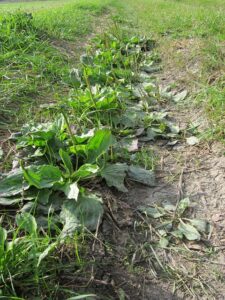
Blessed Thistle (Cardyuus benedictus or Cnicus benedictus)
I love this Blessed Thistle. I first became familiar with it when my grandson was born. Since then, it has been a permanent resident in the garden. Blessed thistle decongests the liver and decreases difficult, painful digestion. A carminative and digestive stimulant, this herb assists with abdominal bloating, indigestion, and nauseous headaches. It also helps relieves water congestion/retention, especially when manifesting below the waist. Milk thistle can also be used.
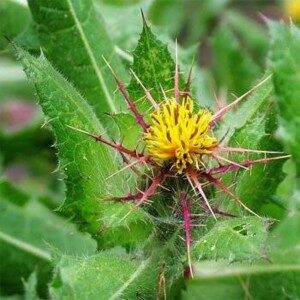
Barberry (Berberis vulgaris)
Barberry is useful when taken at first sign of digestive upset and may be more useful when active symptoms are present. Otherwise, Barberry could be a useful addition to a digestive tonic in small amounts.
This herb is a stimulating, cooling and drying digestive that works to optimize the function of the liver and overall digestion. It helps protect the mucus membrane of the small and large intestine with astringent properties that make it useful when dealing with diarrhea. A great choice.
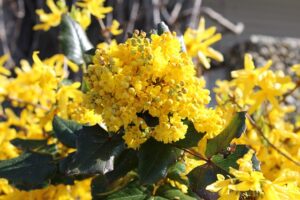
Fennel (Foeniculum vulgare)
Fennel harmonizes and promotes digestion relieving inflammation in the stomach, liver, spleen, and lower bowels. It is often used for colic in infants, gas and nausea, stomach cramps, spasms, and bad breath. Fennel seeds, when eaten after a heavy meal, help prevent heartburn and ease digestion. Plus, it tastes good and almost everyone can take it.
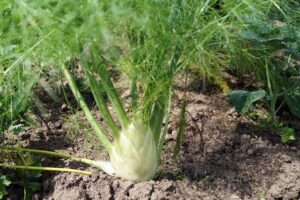
Burdock (Arctium lappa)
Burdock’s cooling and balancing energy helps modulate the actions of the liver, urinary system, lymph, and digestion. Slightly bitter, this herb works best as a supportive agent and works best with other herbs. Burdock Root can be taken, in formula, long-term, and usually with no adverse reactions.
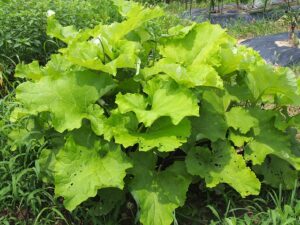
Recipes
Digestive Support Tea
Mix equal parts Dandelion Root, Burdock Root, Fennel, Plantain and Blessed Thistle or Milk Thistle.
- Place 2 tablespoons herb in 16 oz of cold water.
- Place of low to medium heat and bring to boil.
- Remove from heat and cover.
- Let steep for 20 min.
- Strain and drink ¼ cup 3x per day or 20 minutes before meals.
Digestive Support liquid extract
Mix individually prepared tinctures of
- 1-part Dandelion Root
- 1-part Burdock Root
- 1-part Fennel Seed
- 1-part Blessed Thistle
Take 1 full dropper as needed for digestive upset or 20 minutes before meals.
Other Suggestions:
Triphala – An Ayurvedic formula that balances lower digestive function. Triphala acts as an astringent in the case of diarrhea and as a laxative in the case of constipation.
Digestive enzymes – Taken 15 to 20 minutes before a meal, digestive enzymes may help fill the void of too little bile for digestion. Make sure it has a full complement of enzymes.
Bile Salts – Taken 15 to 20 minutes before eating fatty foods to assist with digestion.
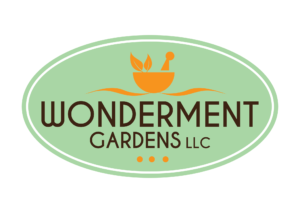
Wonderment Gardens Product Suggestions
All Wonderment Gardens products are hand-crafted. Each one is made with love and integrity you can count on.
Further Reading
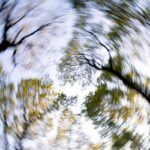
Natural Solutions for Vertigo
Dear Annie, do you know of any natural solutions to help relieve vertigo? It started over a year ago, but I’ve had very few episodes until recently. Its miserable. A few times now, I’ve been so dizzy; I get nauseous. My ears ring “normally” yet a few hours before the onset of a vertigo episode, my left ear rings louder.

Easy Ways to Make A Big Impact On Your Child’s Health
Welcome Guest Bloggers Greg and Carmen Moro, creators of “Bad” Parenting Advice. Improving the mental and physical health of your family can be a challenge,
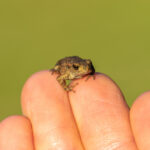
Wart, Wart Go Away
Dear Annie, I have been battling a wart on my finger for the last 20 years. I’ve seen multiple dermatologists and even an orthopedic surgeon who
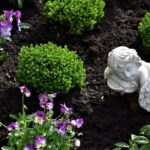
Astaxanthin and Lipothiamine – Memory Strengthening Strategies
Dear Annie, I wanted to share a memory-strengthening strategy with you. About 20 years ago (I’m 72) I started noticing my memory beginning to weaken, and
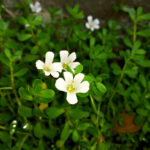
Bacopa – Nourishment for the brain
Bacopa, also known as Brahmi and Water Hyssop, has a long history of use in the indigenous medical systems of India and Sri Lanka. These
Thank you for reading. I hope you found my posts helpful and interesting. Please comment below as you are guided to share your experiences.
Blessings,
Annie
References
https://wortsnall.wordpress.com/2015/03/15/return-to-post-cholecystectomy-syndrome-pcs/
https://wortsnall.wordpress.com/2014/09/22/more-fun-with-post-cholecystectomy-syndrome-pcs/
https://www.vchoice.com/life-after-gallbladder-removal
https://www.richters.com/show.cgi?page=QandA/Medicinal/20020603-1.html
Disclaimer
The statements and ideas presented here are not intended to diagnose, treat, cure, or prevent any disease or condition. They have not been evaluated by the FDA. All ideas presented are for the sole purpose of education. To help you take control of your own health. If you have a health concern or condition, consult a physician. We suggest that you always consult a medical doctor before modifying your diet, using any new product, drug, supplement, or doing any new exercises.
These statements and products have not been evaluated by the FDA. They are not intended to diagnose, treat, cure, or prevent any disease or condition. If you have a health concern or condition, consult a physician. Always consult a medical doctor before modifying your diet, using any new product, drug, supplement, or doing any new exercises.
Herbs taken for health purposes should be treated with the same care as medicine. Herbal remedies are no substitute for a healthy diet and lifestyle. If you are serious about good health, you’ll want to combine diet, exercise, herbals, a good relationship with your doctor and a generally healthy lifestyle. No one of these will do it alone.
This information is designed to be used as part of a complete health plan. No products are intended to replace your doctor’s care, or to supersede any of his/her advice or prescriptions.

